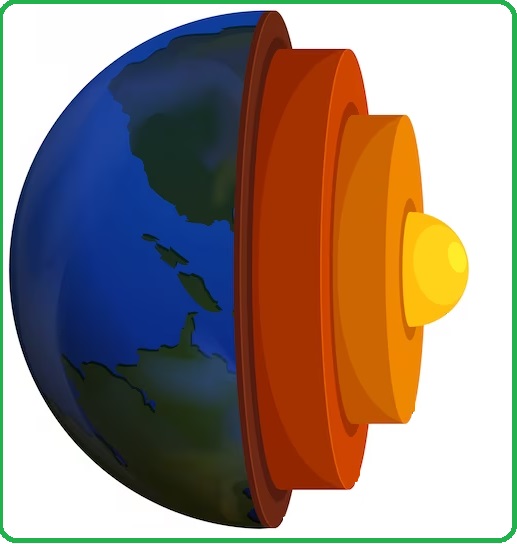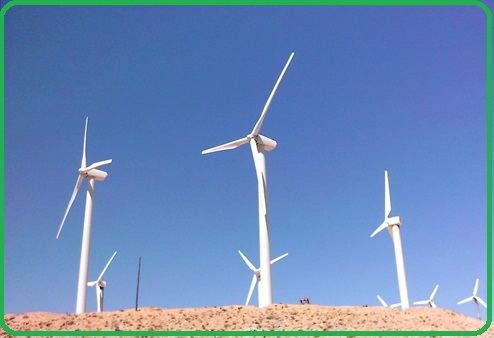1. Task 07.
Read the text about a Chinese trader who has bought a famous piece of artwork,
then tick the correct sentence ending (A, B, C or D) for the beginning of the sentence.
Chinese art collector
Liu Yiqian, a former taxi driver turned billionaire art collector, confirmed on Tuesday that he was the buyer of the painting of a nude woman by Amedeo Modigliani that sold for $170.4 million at Christie's New York on Monday night.Speaking by telephone from Shanghai, the Chinese collector said he planned to bring the work back to the city, where he and his wife have two private museums."We are planning to exhibit it for the museum's fifth anniversary," he said. "It will be an opportunity for Chinese art lovers to see good artworks without having to leave the country, which is one of the main reasons why we founded the museums."Bidding by telephone, Mr Liu, 52, was one of six people competing for Modigliani's 1917-18 canvas, Nu Couché, during the auction. The final price of $170.4 million with fees was well above the previous auction record of $70.7 million for a work by Modigliani. With Mr Liu's winning bid, the painting became the 10th work of art to reach the elite nine-figure club for works sold at auction."Modigliani's works already have a pretty established value on the market," Mr Liu said. "This work is relatively nice compared to his other nude paintings. And his nude paintings have been collected by some of the world's top museums."As a teenager growing up in Shanghai during the tumultuous years of the Cultural Revolution, Mr Liu sold handbags on the street and later worked as a taxi driver. After dropping out of middle school, he went on to ride the wave of China's economic opening and reform, making a fortune through stock trading in real estate and pharmaceuticals in the 1980s and 1990s. According to the 2015 Bloomberg Billionaires Index, Mr Liu is worth at least $1.5 billion."To me, art collecting is primarily a process of learning about art," Mr Liu said in an interview with The New York Times in 2013. "First you must be fond of the art. Then you can have an understanding of it."Mr Liu, together with his wife, Wang Wei, is one of China's most visible - some say flashy - art collectors. Over the years, they have built a vast collection of both traditional and contemporary Chinese art, much of which is displayed in their two museums in Shanghai: the Long Museum Pudong, which opened in 2012; and the Long Museum West Bund, which opened last year. Ms Wang, 52, is the director of both museums."I first came up with the idea that the Long Museum should collect international objects about two years ago," said Ms Wang, adding that her husband has been very supportive of her work.The couple's collection includes a 15th-century silk hanging, called a thangka, bought by Mr Liu for $45 million at a Christie's auction in Hong Kong last year. The purchase made headlines when it set the record for a Chinese artwork sold at an international auction.With that purchase, Mr Liu broke a record he had set months earlier when he paid $36.3 million at a Sotheby's sale for a tiny Ming dynasty porcelain cup known as a "chicken cup". Soon after, he caused an uproar after a photograph that showed him sipping tea from the antique cup spread online.
Thanks to their two museums in Shanghai, Mr and Ms Liu.....
3. Task 23.

Renewable Energy
In recent years, the conversation around renewable energy has gained momentum as the world seeks sustainable
alternatives to traditional sources.
Renewable energy sources, such as solar, wind, hydro, and geothermal power, have become key players in mitigating
climate change and reducing the reliance on fossil fuels.
Solar energy harnesses the power of the sun, converting sunlight into electricity using photovoltaic cells.
Wind energy utilizes the kinetic energy of the wind to generate electricity through wind turbines.
Hydroelectric power taps into the energy of flowing water,
often through dams, to produce electricity. Geothermal energy, derived from the Earth's internal heat,
is harnessed for power generation and heating.
While these renewable sources offer cleaner options, challenges remain.
The intermittent nature of solar and wind energy, for example,
necessitates advancements in energy storage technologies. Additionally, the initial costs of setting up renewable
energy infrastructure can be high, although the long-term benefits are substantial.
The transition to renewable energy is a global effort, with many countries investing in research and
development to enhance the efficiency and affordability of these technologies.
As the world continues to explore and adopt renewable energy solutions, the hope is to create a more
sustainable and environmentally friendly future.
Where does geothermal energy come from?
Earth's internal heat
Kinetic energy of the wind
6. Task 06.
Read the text about a Chinese trader who has bought a famous piece of artwork,
then tick the correct sentence ending (A, B, C or D) for the beginning of the sentence.
Chinese art collector
Liu Yiqian, a former taxi driver turned billionaire art collector, confirmed on Tuesday that he was the buyer of the painting of a nude woman by Amedeo Modigliani that sold for $170.4 million at Christie's New York on Monday night.Speaking by telephone from Shanghai, the Chinese collector said he planned to bring the work back to the city, where he and his wife have two private museums."We are planning to exhibit it for the museum's fifth anniversary," he said. "It will be an opportunity for Chinese art lovers to see good artworks without having to leave the country, which is one of the main reasons why we founded the museums."Bidding by telephone, Mr Liu, 52, was one of six people competing for Modigliani's 1917-18 canvas, Nu Couché, during the auction. The final price of $170.4 million with fees was well above the previous auction record of $70.7 million for a work by Modigliani. With Mr Liu's winning bid, the painting became the 10th work of art to reach the elite nine-figure club for works sold at auction."Modigliani's works already have a pretty established value on the market," Mr Liu said. "This work is relatively nice compared to his other nude paintings. And his nude paintings have been collected by some of the world's top museums."As a teenager growing up in Shanghai during the tumultuous years of the Cultural Revolution, Mr Liu sold handbags on the street and later worked as a taxi driver. After dropping out of middle school, he went on to ride the wave of China's economic opening and reform, making a fortune through stock trading in real estate and pharmaceuticals in the 1980s and 1990s. According to the 2015 Bloomberg Billionaires Index, Mr Liu is worth at least $1.5 billion."To me, art collecting is primarily a process of learning about art," Mr Liu said in an interview with The New York Times in 2013. "First you must be fond of the art. Then you can have an understanding of it."Mr Liu, together with his wife, Wang Wei, is one of China's most visible - some say flashy - art collectors. Over the years, they have built a vast collection of both traditional and contemporary Chinese art, much of which is displayed in their two museums in Shanghai: the Long Museum Pudong, which opened in 2012; and the Long Museum West Bund, which opened last year. Ms Wang, 52, is the director of both museums."I first came up with the idea that the Long Museum should collect international objects about two years ago," said Ms Wang, adding that her husband has been very supportive of her work.The couple's collection includes a 15th-century silk hanging, called a thangka, bought by Mr Liu for $45 million at a Christie's auction in Hong Kong last year. The purchase made headlines when it set the record for a Chinese artwork sold at an international auction.With that purchase, Mr Liu broke a record he had set months earlier when he paid $36.3 million at a Sotheby's sale for a tiny Ming dynasty porcelain cup known as a "chicken cup". Soon after, he caused an uproar after a photograph that showed him sipping tea from the antique cup spread online.
Mr Liu believes art collectors should......
8. Task 01.
Read the text about a Chinese trader who has bought a famous piece of artwork,
then tick the correct sentence ending (A, B, C or D) for the beginning of the sentence.

Chinese art collector
Liu Yiqian, a former taxi driver turned billionaire art collector, confirmed on Tuesday that he was the buyer of the painting of a nude woman by Amedeo Modigliani that sold for $170.4 million at Christie's New York on Monday night.Speaking by telephone from Shanghai, the Chinese collector said he planned to bring the work back to the city, where he and his wife have two private museums."We are planning to exhibit it for the museum's fifth anniversary," he said. "It will be an opportunity for Chinese art lovers to see good artworks without having to leave the country, which is one of the main reasons why we founded the museums."Bidding by telephone, Mr Liu, 52, was one of six people competing for Modigliani's 1917-18 canvas, Nu Couché, during the auction. The final price of $170.4 million with fees was well above the previous auction record of $70.7 million for a work by Modigliani. With Mr Liu's winning bid, the painting became the 10th work of art to reach the elite nine-figure club for works sold at auction."Modigliani's works already have a pretty established value on the market," Mr Liu said. "This work is relatively nice compared to his other nude paintings. And his nude paintings have been collected by some of the world's top museums."As a teenager growing up in Shanghai during the tumultuous years of the Cultural Revolution, Mr Liu sold handbags on the street and later worked as a taxi driver. After dropping out of middle school, he went on to ride the wave of China's economic opening and reform, making a fortune through stock trading in real estate and pharmaceuticals in the 1980s and 1990s. According to the 2015 Bloomberg Billionaires Index, Mr Liu is worth at least $1.5 billion."To me, art collecting is primarily a process of learning about art," Mr Liu said in an interview with The New York Times in 2013. "First you must be fond of the art. Then you can have an understanding of it."Mr Liu, together with his wife, Wang Wei, is one of China's most visible - some say flashy - art collectors. Over the years, they have built a vast collection of both traditional and contemporary Chinese art, much of which is displayed in their two museums in Shanghai: the Long Museum Pudong, which opened in 2012; and the Long Museum West Bund, which opened last year. Ms Wang, 52, is the director of both museums."I first came up with the idea that the Long Museum should collect international objects about two years ago," said Ms Wang, adding that her husband has been very supportive of her work.The couple's collection includes a 15th-century silk hanging, called a thangka, bought by Mr Liu for $45 million at a Christie's auction in Hong Kong last year. The purchase made headlines when it set the record for a Chinese artwork sold at an international auction.With that purchase, Mr Liu broke a record he had set months earlier when he paid $36.3 million at a Sotheby's sale for a tiny Ming dynasty porcelain cup known as a "chicken cup". Soon after, he caused an uproar after a photograph that showed him sipping tea from the antique cup spread online.
Chinese Tycoon is going to display Modigliani ....
9. Task 08.
Read the text about a Chinese trader who has bought a famous piece of artwork,
then tick the correct sentence ending (A, B, C or D) for the beginning of the sentence.
Chinese art collector
Liu Yiqian, a former taxi driver turned billionaire art collector, confirmed on Tuesday that he was the buyer of the painting of a nude woman by Amedeo Modigliani that sold for $170.4 million at Christie's New York on Monday night.Speaking by telephone from Shanghai, the Chinese collector said he planned to bring the work back to the city, where he and his wife have two private museums."We are planning to exhibit it for the museum's fifth anniversary," he said. "It will be an opportunity for Chinese art lovers to see good artworks without having to leave the country, which is one of the main reasons why we founded the museums."Bidding by telephone, Mr Liu, 52, was one of six people competing for Modigliani's 1917-18 canvas, Nu Couché, during the auction. The final price of $170.4 million with fees was well above the previous auction record of $70.7 million for a work by Modigliani. With Mr Liu's winning bid, the painting became the 10th work of art to reach the elite nine-figure club for works sold at auction."Modigliani's works already have a pretty established value on the market," Mr Liu said. "This work is relatively nice compared to his other nude paintings. And his nude paintings have been collected by some of the world's top museums."As a teenager growing up in Shanghai during the tumultuous years of the Cultural Revolution, Mr Liu sold handbags on the street and later worked as a taxi driver. After dropping out of middle school, he went on to ride the wave of China's economic opening and reform, making a fortune through stock trading in real estate and pharmaceuticals in the 1980s and 1990s. According to the 2015 Bloomberg Billionaires Index, Mr Liu is worth at least $1.5 billion."To me, art collecting is primarily a process of learning about art," Mr Liu said in an interview with The New York Times in 2013. "First you must be fond of the art. Then you can have an understanding of it."Mr Liu, together with his wife, Wang Wei, is one of China's most visible - some say flashy - art collectors. Over the years, they have built a vast collection of both traditional and contemporary Chinese art, much of which is displayed in their two museums in Shanghai: the Long Museum Pudong, which opened in 2012; and the Long Museum West Bund, which opened last year. Ms Wang, 52, is the director of both museums."I first came up with the idea that the Long Museum should collect international objects about two years ago," said Ms Wang, adding that her husband has been very supportive of her work.The couple's collection includes a 15th-century silk hanging, called a thangka, bought by Mr Liu for $45 million at a Christie's auction in Hong Kong last year. The purchase made headlines when it set the record for a Chinese artwork sold at an international auction.With that purchase, Mr Liu broke a record he had set months earlier when he paid $36.3 million at a Sotheby's sale for a tiny Ming dynasty porcelain cup known as a "chicken cup". Soon after, he caused an uproar after a photograph that showed him sipping tea from the antique cup spread online.
At a Sotheby's auction, Mr Liu spent a fortune on........
10. Task 22.

Renewable Energy
In recent years, the conversation around renewable energy has gained momentum as the world seeks sustainable
alternatives to traditional sources.
Renewable energy sources, such as solar, wind, hydro, and geothermal power, have become key players in mitigating
climate change and reducing the reliance on fossil fuels.
Solar energy harnesses the power of the sun, converting sunlight into electricity using photovoltaic cells.
Wind energy utilizes the kinetic energy of the wind to generate electricity through wind turbines.
Hydroelectric power taps into the energy of flowing water,
often through dams, to produce electricity. Geothermal energy, derived from the Earth's internal heat,
is harnessed for power generation and heating.
While these renewable sources offer cleaner options, challenges remain.
The intermittent nature of solar and wind energy, for example,
necessitates advancements in energy storage technologies. Additionally, the initial costs of setting up renewable
energy infrastructure can be high, although the long-term benefits are substantial.
The transition to renewable energy is a global effort, with many countries investing in research and
development to enhance the efficiency and affordability of these technologies.
As the world continues to explore and adopt renewable energy solutions, the hope is to create a more
sustainable and environmentally friendly future.
What does hydroelectric power rely on for electricity generation?
13. Task 24.

Renewable Energy
In recent years, the conversation around renewable energy has gained momentum as the world seeks sustainable
alternatives to traditional sources.
Renewable energy sources, such as solar, wind, hydro, and geothermal power, have become key players in mitigating
climate change and reducing the reliance on fossil fuels.
Solar energy harnesses the power of the sun, converting sunlight into electricity using photovoltaic cells.
Wind energy utilizes the kinetic energy of the wind to generate electricity through wind turbines.
Hydroelectric power taps into the energy of flowing water,
often through dams, to produce electricity. Geothermal energy, derived from the Earth's internal heat,
is harnessed for power generation and heating.
While these renewable sources offer cleaner options, challenges remain.
The intermittent nature of solar and wind energy, for example,
necessitates advancements in energy storage technologies. Additionally, the initial costs of setting up renewable
energy infrastructure can be high, although the long-term benefits are substantial.
The transition to renewable energy is a global effort, with many countries investing in research and
development to enhance the efficiency and affordability of these technologies.
As the world continues to explore and adopt renewable energy solutions, the hope is to create a more
sustainable and environmentally friendly future.
What is a challenge associated with solar and wind energy mentioned in the text?
Intermittent nature
High initial costs
15. Task 02.
Read the text about a Chinese trader who has bought a famous piece of artwork,
then tick the correct sentence ending (A, B, C or D) for the beginning of the sentence.
Chinese art collector
Liu Yiqian, a former taxi driver turned billionaire art collector, confirmed on Tuesday that he was the buyer of the painting of a nude woman by Amedeo Modigliani that sold for $170.4 million at Christie's New York on Monday night.Speaking by telephone from Shanghai, the Chinese collector said he planned to bring the work back to the city, where he and his wife have two private museums."We are planning to exhibit it for the museum's fifth anniversary," he said. "It will be an opportunity for Chinese art lovers to see good artworks without having to leave the country, which is one of the main reasons why we founded the museums."Bidding by telephone, Mr Liu, 52, was one of six people competing for Modigliani's 1917-18 canvas, Nu Couché, during the auction. The final price of $170.4 million with fees was well above the previous auction record of $70.7 million for a work by Modigliani. With Mr Liu's winning bid, the painting became the 10th work of art to reach the elite nine-figure club for works sold at auction."Modigliani's works already have a pretty established value on the market," Mr Liu said. "This work is relatively nice compared to his other nude paintings. And his nude paintings have been collected by some of the world's top museums."As a teenager growing up in Shanghai during the tumultuous years of the Cultural Revolution, Mr Liu sold handbags on the street and later worked as a taxi driver. After dropping out of middle school, he went on to ride the wave of China's economic opening and reform, making a fortune through stock trading in real estate and pharmaceuticals in the 1980s and 1990s. According to the 2015 Bloomberg Billionaires Index, Mr Liu is worth at least $1.5 billion."To me, art collecting is primarily a process of learning about art," Mr Liu said in an interview with The New York Times in 2013. "First you must be fond of the art. Then you can have an understanding of it."Mr Liu, together with his wife, Wang Wei, is one of China's most visible - some say flashy - art collectors. Over the years, they have built a vast collection of both traditional and contemporary Chinese art, much of which is displayed in their two museums in Shanghai: the Long Museum Pudong, which opened in 2012; and the Long Museum West Bund, which opened last year. Ms Wang, 52, is the director of both museums."I first came up with the idea that the Long Museum should collect international objects about two years ago," said Ms Wang, adding that her husband has been very supportive of her work.The couple's collection includes a 15th-century silk hanging, called a thangka, bought by Mr Liu for $45 million at a Christie's auction in Hong Kong last year. The purchase made headlines when it set the record for a Chinese artwork sold at an international auction.With that purchase, Mr Liu broke a record he had set months earlier when he paid $36.3 million at a Sotheby's sale for a tiny Ming dynasty porcelain cup known as a "chicken cup". Soon after, he caused an uproar after a photograph that showed him sipping tea from the antique cup spread online.
Mr Liu would like his countrymen to........
17. Task 19.

Renewable Energy
In recent years, the conversation around renewable energy has gained momentum as the world seeks sustainable
alternatives to traditional sources.
Renewable energy sources, such as solar, wind, hydro, and geothermal power, have become key players in mitigating
climate change and reducing the reliance on fossil fuels.
Solar energy harnesses the power of the sun, converting sunlight into electricity using photovoltaic cells.
Wind energy utilizes the kinetic energy of the wind to generate electricity through wind turbines.
Hydroelectric power taps into the energy of flowing water,
often through dams, to produce electricity. Geothermal energy, derived from the Earth's internal heat,
is harnessed for power generation and heating.
While these renewable sources offer cleaner options, challenges remain.
The intermittent nature of solar and wind energy, for example,
necessitates advancements in energy storage technologies. Additionally, the initial costs of setting up renewable
energy infrastructure can be high, although the long-term benefits are substantial.
The transition to renewable energy is a global effort, with many countries investing in research and
development to enhance the efficiency and affordability of these technologies.
As the world continues to explore and adopt renewable energy solutions, the hope is to create a more
sustainable and environmentally friendly future.
Which of the following is NOT mentioned as a renewable energy source in the text?
18. Task 26.

Renewable Energy
In recent years, the conversation around renewable energy has gained momentum as the world seeks sustainable
alternatives to traditional sources.
Renewable energy sources, such as solar, wind, hydro, and geothermal power, have become key players in mitigating
climate change and reducing the reliance on fossil fuels.
Solar energy harnesses the power of the sun, converting sunlight into electricity using photovoltaic cells.
Wind energy utilizes the kinetic energy of the wind to generate electricity through wind turbines.
Hydroelectric power taps into the energy of flowing water,
often through dams, to produce electricity. Geothermal energy, derived from the Earth's internal heat,
is harnessed for power generation and heating.
While these renewable sources offer cleaner options, challenges remain.
The intermittent nature of solar and wind energy, for example,
necessitates advancements in energy storage technologies. Additionally, the initial costs of setting up renewable
energy infrastructure can be high, although the long-term benefits are substantial.
The transition to renewable energy is a global effort, with many countries investing in research and
development to enhance the efficiency and affordability of these technologies.
As the world continues to explore and adopt renewable energy solutions, the hope is to create a more
sustainable and environmentally friendly future.
Why might the initial costs of setting up renewable energy infrastructure be considered high?
20. Task 27.

Renewable Energy
In recent years, the conversation around renewable energy has gained momentum as the world seeks sustainable
alternatives to traditional sources.
Renewable energy sources, such as solar, wind, hydro, and geothermal power, have become key players in mitigating
climate change and reducing the reliance on fossil fuels.
Solar energy harnesses the power of the sun, converting sunlight into electricity using photovoltaic cells.
Wind energy utilizes the kinetic energy of the wind to generate electricity through wind turbines.
Hydroelectric power taps into the energy of flowing water,
often through dams, to produce electricity. Geothermal energy, derived from the Earth's internal heat,
is harnessed for power generation and heating.
While these renewable sources offer cleaner options, challenges remain.
The intermittent nature of solar and wind energy, for example,
necessitates advancements in energy storage technologies. Additionally, the initial costs of setting up renewable
energy infrastructure can be high, although the long-term benefits are substantial.
The transition to renewable energy is a global effort, with many countries investing in research and
development to enhance the efficiency and affordability of these technologies.
As the world continues to explore and adopt renewable energy solutions, the hope is to create a more
sustainable and environmentally friendly future.
What is the global hope associated with the transition to renewable energy?
Decline in the use of renewable energy
Creation of a more sustainable and environmentally friendly future
21. Task 18.

Reading Comprehension: Renewable Energy
In recent years, the conversation around renewable energy has gained momentum as the world seeks sustainable
alternatives to traditional sources.
Renewable energy sources, such as solar, wind, hydro, and geothermal power, have become key players in mitigating
climate change and reducing the reliance on fossil fuels.
Solar energy harnesses the power of the sun, converting sunlight into electricity using photovoltaic cells.
Wind energy utilizes the kinetic energy of the wind to generate electricity through wind turbines.
Hydroelectric power taps into the energy of flowing water,
often through dams, to produce electricity. Geothermal energy, derived from the Earth's internal heat,
is harnessed for power generation and heating.
While these renewable sources offer cleaner options, challenges remain.
The intermittent nature of solar and wind energy, for example,
necessitates advancements in energy storage technologies. Additionally, the initial costs of setting up renewable
energy infrastructure can be high, although the long-term benefits are substantial.
The transition to renewable energy is a global effort, with many countries investing in research and
development to enhance the efficiency and affordability of these technologies.
As the world continues to explore and adopt renewable energy solutions, the hope is to create a more
sustainable and environmentally friendly future.
What is the main focus of the text?
22. Task 21.

Renewable Energy
In recent years, the conversation around renewable energy has gained momentum as the world seeks sustainable
alternatives to traditional sources.
Renewable energy sources, such as solar, wind, hydro, and geothermal power, have become key players in mitigating
climate change and reducing the reliance on fossil fuels.
Solar energy harnesses the power of the sun, converting sunlight into electricity using photovoltaic cells.
Wind energy utilizes the kinetic energy of the wind to generate electricity through wind turbines.
Hydroelectric power taps into the energy of flowing water,
often through dams, to produce electricity. Geothermal energy, derived from the Earth's internal heat,
is harnessed for power generation and heating.
While these renewable sources offer cleaner options, challenges remain.
The intermittent nature of solar and wind energy, for example,
necessitates advancements in energy storage technologies. Additionally, the initial costs of setting up renewable
energy infrastructure can be high, although the long-term benefits are substantial.
The transition to renewable energy is a global effort, with many countries investing in research and
development to enhance the efficiency and affordability of these technologies.
As the world continues to explore and adopt renewable energy solutions, the hope is to create a more
sustainable and environmentally friendly future.
What is the purpose of wind turbines in generating electricity?
Extracting heat from the Earth's interior
Harnessing the kinetic energy of the wind
23. Task 05.
Read the text about a Chinese trader who has bought a famous piece of artwork,
then tick the correct sentence ending (A, B, C or D) for the beginning of the sentence.
Chinese art collector
Liu Yiqian, a former taxi driver turned billionaire art collector, confirmed on Tuesday that he was the buyer of the painting of a nude woman by Amedeo Modigliani that sold for $170.4 million at Christie's New York on Monday night.Speaking by telephone from Shanghai, the Chinese collector said he planned to bring the work back to the city, where he and his wife have two private museums."We are planning to exhibit it for the museum's fifth anniversary," he said. "It will be an opportunity for Chinese art lovers to see good artworks without having to leave the country, which is one of the main reasons why we founded the museums."Bidding by telephone, Mr Liu, 52, was one of six people competing for Modigliani's 1917-18 canvas, Nu Couché, during the auction. The final price of $170.4 million with fees was well above the previous auction record of $70.7 million for a work by Modigliani. With Mr Liu's winning bid, the painting became the 10th work of art to reach the elite nine-figure club for works sold at auction."Modigliani's works already have a pretty established value on the market," Mr Liu said. "This work is relatively nice compared to his other nude paintings. And his nude paintings have been collected by some of the world's top museums."As a teenager growing up in Shanghai during the tumultuous years of the Cultural Revolution, Mr Liu sold handbags on the street and later worked as a taxi driver. After dropping out of middle school, he went on to ride the wave of China's economic opening and reform, making a fortune through stock trading in real estate and pharmaceuticals in the 1980s and 1990s. According to the 2015 Bloomberg Billionaires Index, Mr Liu is worth at least $1.5 billion."To me, art collecting is primarily a process of learning about art," Mr Liu said in an interview with The New York Times in 2013. "First you must be fond of the art. Then you can have an understanding of it."Mr Liu, together with his wife, Wang Wei, is one of China's most visible - some say flashy - art collectors. Over the years, they have built a vast collection of both traditional and contemporary Chinese art, much of which is displayed in their two museums in Shanghai: the Long Museum Pudong, which opened in 2012; and the Long Museum West Bund, which opened last year. Ms Wang, 52, is the director of both museums."I first came up with the idea that the Long Museum should collect international objects about two years ago," said Ms Wang, adding that her husband has been very supportive of her work.The couple's collection includes a 15th-century silk hanging, called a thangka, bought by Mr Liu for $45 million at a Christie's auction in Hong Kong last year. The purchase made headlines when it set the record for a Chinese artwork sold at an international auction.With that purchase, Mr Liu broke a record he had set months earlier when he paid $36.3 million at a Sotheby's sale for a tiny Ming dynasty porcelain cup known as a "chicken cup". Soon after, he caused an uproar after a photograph that showed him sipping tea from the antique cup spread online.
About 40 years ago, Mr Liu became very rich as a result of his......
24. Task 09.
Read the text about a Chinese trader who has bought a famous piece of artwork,
then tick the correct sentence ending (A, B, C or D) for the beginning of the sentence.
Chinese art collector
Liu Yiqian, a former taxi driver turned billionaire art collector, confirmed on Tuesday that he was the buyer of the painting of a nude woman by Amedeo Modigliani that sold for $170.4 million at Christie's New York on Monday night.Speaking by telephone from Shanghai, the Chinese collector said he planned to bring the work back to the city, where he and his wife have two private museums."We are planning to exhibit it for the museum's fifth anniversary," he said. "It will be an opportunity for Chinese art lovers to see good artworks without having to leave the country, which is one of the main reasons why we founded the museums."Bidding by telephone, Mr Liu, 52, was one of six people competing for Modigliani's 1917-18 canvas, Nu Couché, during the auction. The final price of $170.4 million with fees was well above the previous auction record of $70.7 million for a work by Modigliani. With Mr Liu's winning bid, the painting became the 10th work of art to reach the elite nine-figure club for works sold at auction."Modigliani's works already have a pretty established value on the market," Mr Liu said. "This work is relatively nice compared to his other nude paintings. And his nude paintings have been collected by some of the world's top museums."As a teenager growing up in Shanghai during the tumultuous years of the Cultural Revolution, Mr Liu sold handbags on the street and later worked as a taxi driver. After dropping out of middle school, he went on to ride the wave of China's economic opening and reform, making a fortune through stock trading in real estate and pharmaceuticals in the 1980s and 1990s. According to the 2015 Bloomberg Billionaires Index, Mr Liu is worth at least $1.5 billion."To me, art collecting is primarily a process of learning about art," Mr Liu said in an interview with The New York Times in 2013. "First you must be fond of the art. Then you can have an understanding of it."Mr Liu, together with his wife, Wang Wei, is one of China's most visible - some say flashy - art collectors. Over the years, they have built a vast collection of both traditional and contemporary Chinese art, much of which is displayed in their two museums in Shanghai: the Long Museum Pudong, which opened in 2012; and the Long Museum West Bund, which opened last year. Ms Wang, 52, is the director of both museums."I first came up with the idea that the Long Museum should collect international objects about two years ago," said Ms Wang, adding that her husband has been very supportive of her work.The couple's collection includes a 15th-century silk hanging, called a thangka, bought by Mr Liu for $45 million at a Christie's auction in Hong Kong last year. The purchase made headlines when it set the record for a Chinese artwork sold at an international auction.With that purchase, Mr Liu broke a record he had set months earlier when he paid $36.3 million at a Sotheby's sale for a tiny Ming dynasty porcelain cup known as a "chicken cup". Soon after, he caused an uproar after a photograph that showed him sipping tea from the antique cup spread online.
Mr Liu shocked people when he....
25. Task 03.

Read the text about a Chinese trader who has bought a famous piece of artwork,
then tick the correct sentence ending (A, B, C or D) for the beginning of the sentence.
Chinese art collector
Liu Yiqian, a former taxi driver turned billionaire art collector, confirmed on Tuesday that he was the buyer of the painting of a nude woman by Amedeo Modigliani that sold for $170.4 million at Christie's New York on Monday night.Speaking by telephone from Shanghai, the Chinese collector said he planned to bring the work back to the city, where he and his wife have two private museums."We are planning to exhibit it for the museum's fifth anniversary," he said. "It will be an opportunity for Chinese art lovers to see good artworks without having to leave the country, which is one of the main reasons why we founded the museums."Bidding by telephone, Mr Liu, 52, was one of six people competing for Modigliani's 1917-18 canvas, Nu Couché, during the auction. The final price of $170.4 million with fees was well above the previous auction record of $70.7 million for a work by Modigliani. With Mr Liu's winning bid, the painting became the 10th work of art to reach the elite nine-figure club for works sold at auction."Modigliani's works already have a pretty established value on the market," Mr Liu said. "This work is relatively nice compared to his other nude paintings. And his nude paintings have been collected by some of the world's top museums."As a teenager growing up in Shanghai during the tumultuous years of the Cultural Revolution, Mr Liu sold handbags on the street and later worked as a taxi driver. After dropping out of middle school, he went on to ride the wave of China's economic opening and reform, making a fortune through stock trading in real estate and pharmaceuticals in the 1980s and 1990s. According to the 2015 Bloomberg Billionaires Index, Mr Liu is worth at least $1.5 billion."To me, art collecting is primarily a process of learning about art," Mr Liu said in an interview with The New York Times in 2013. "First you must be fond of the art. Then you can have an understanding of it."Mr Liu, together with his wife, Wang Wei, is one of China's most visible - some say flashy - art collectors. Over the years, they have built a vast collection of both traditional and contemporary Chinese art, much of which is displayed in their two museums in Shanghai: the Long Museum Pudong, which opened in 2012; and the Long Museum West Bund, which opened last year. Ms Wang, 52, is the director of both museums."I first came up with the idea that the Long Museum should collect international objects about two years ago," said Ms Wang, adding that her husband has been very supportive of her work.The couple's collection includes a 15th-century silk hanging, called a thangka, bought by Mr Liu for $45 million at a Christie's auction in Hong Kong last year. The purchase made headlines when it set the record for a Chinese artwork sold at an international auction.With that purchase, Mr Liu broke a record he had set months earlier when he paid $36.3 million at a Sotheby's sale for a tiny Ming dynasty porcelain cup known as a "chicken cup". Soon after, he caused an uproar after a photograph that showed him sipping tea from the antique cup spread online.
The price of the Nu Couché masterpiece in a public sale was......
27. Task 25.

Renewable Energy
In recent years, the conversation around renewable energy has gained momentum as the world seeks sustainable
alternatives to traditional sources.
Renewable energy sources, such as solar, wind, hydro, and geothermal power, have become key players in mitigating
climate change and reducing the reliance on fossil fuels.
Solar energy harnesses the power of the sun, converting sunlight into electricity using photovoltaic cells.
Wind energy utilizes the kinetic energy of the wind to generate electricity through wind turbines.
Hydroelectric power taps into the energy of flowing water,
often through dams, to produce electricity. Geothermal energy, derived from the Earth's internal heat,
is harnessed for power generation and heating.
While these renewable sources offer cleaner options, challenges remain.
The intermittent nature of solar and wind energy, for example,
necessitates advancements in energy storage technologies. Additionally, the initial costs of setting up renewable
energy infrastructure can be high, although the long-term benefits are substantial.
The transition to renewable energy is a global effort, with many countries investing in research and
development to enhance the efficiency and affordability of these technologies.
As the world continues to explore and adopt renewable energy solutions, the hope is to create a more
sustainable and environmentally friendly future.
What is necessary for advancements in solar and wind energy?
Decreased reliance on renewable sources
Developments in energy storage technologies
28. Task 04.

Read the text about a Chinese trader who has bought a famous piece of artwork,
then tick the correct sentence ending (A, B, C or D) for the beginning of the sentence.
Chinese art collector
Liu Yiqian, a former taxi driver turned billionaire art collector, confirmed on Tuesday that he was the buyer of the painting of a nude woman by Amedeo Modigliani that sold for $170.4 million at Christie's New York on Monday night.Speaking by telephone from Shanghai, the Chinese collector said he planned to bring the work back to the city, where he and his wife have two private museums."We are planning to exhibit it for the museum's fifth anniversary," he said. "It will be an opportunity for Chinese art lovers to see good artworks without having to leave the country, which is one of the main reasons why we founded the museums."Bidding by telephone, Mr Liu, 52, was one of six people competing for Modigliani's 1917-18 canvas, Nu Couché, during the auction. The final price of $170.4 million with fees was well above the previous auction record of $70.7 million for a work by Modigliani. With Mr Liu's winning bid, the painting became the 10th work of art to reach the elite nine-figure club for works sold at auction."Modigliani's works already have a pretty established value on the market," Mr Liu said. "This work is relatively nice compared to his other nude paintings. And his nude paintings have been collected by some of the world's top museums."As a teenager growing up in Shanghai during the tumultuous years of the Cultural Revolution, Mr Liu sold handbags on the street and later worked as a taxi driver. After dropping out of middle school, he went on to ride the wave of China's economic opening and reform, making a fortune through stock trading in real estate and pharmaceuticals in the 1980s and 1990s. According to the 2015 Bloomberg Billionaires Index, Mr Liu is worth at least $1.5 billion."To me, art collecting is primarily a process of learning about art," Mr Liu said in an interview with The New York Times in 2013. "First you must be fond of the art. Then you can have an understanding of it."Mr Liu, together with his wife, Wang Wei, is one of China's most visible - some say flashy - art collectors. Over the years, they have built a vast collection of both traditional and contemporary Chinese art, much of which is displayed in their two museums in Shanghai: the Long Museum Pudong, which opened in 2012; and the Long Museum West Bund, which opened last year. Ms Wang, 52, is the director of both museums."I first came up with the idea that the Long Museum should collect international objects about two years ago," said Ms Wang, adding that her husband has been very supportive of her work.The couple's collection includes a 15th-century silk hanging, called a thangka, bought by Mr Liu for $45 million at a Christie's auction in Hong Kong last year. The purchase made headlines when it set the record for a Chinese artwork sold at an international auction.With that purchase, Mr Liu broke a record he had set months earlier when he paid $36.3 million at a Sotheby's sale for a tiny Ming dynasty porcelain cup known as a "chicken cup". Soon after, he caused an uproar after a photograph that showed him sipping tea from the antique cup spread online.
In his adolescence, Mr Liu witnessed.......
29. Task 20.

Renewable Energy
In recent years, the conversation around renewable energy has gained momentum as the world seeks sustainable
alternatives to traditional sources.
Renewable energy sources, such as solar, wind, hydro, and geothermal power, have become key players in mitigating
climate change and reducing the reliance on fossil fuels.
Solar energy harnesses the power of the sun, converting sunlight into electricity using photovoltaic cells.
Wind energy utilizes the kinetic energy of the wind to generate electricity through wind turbines.
Hydroelectric power taps into the energy of flowing water,
often through dams, to produce electricity. Geothermal energy, derived from the Earth's internal heat,
is harnessed for power generation and heating.
While these renewable sources offer cleaner options, challenges remain.
The intermittent nature of solar and wind energy, for example,
necessitates advancements in energy storage technologies. Additionally, the initial costs of setting up renewable
energy infrastructure can be high, although the long-term benefits are substantial.
The transition to renewable energy is a global effort, with many countries investing in research and
development to enhance the efficiency and affordability of these technologies.
As the world continues to explore and adopt renewable energy solutions, the hope is to create a more
sustainable and environmentally friendly future.
How does solar energy generate electricity?



